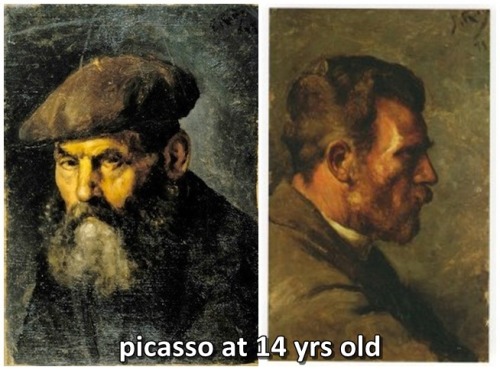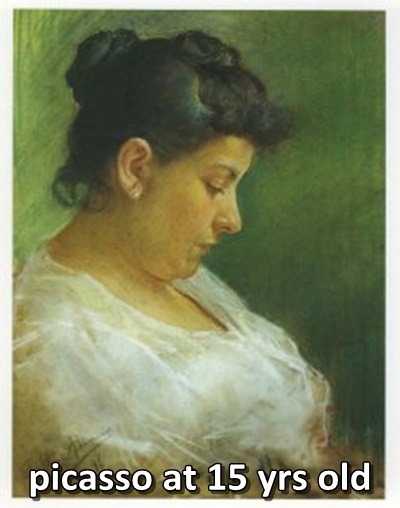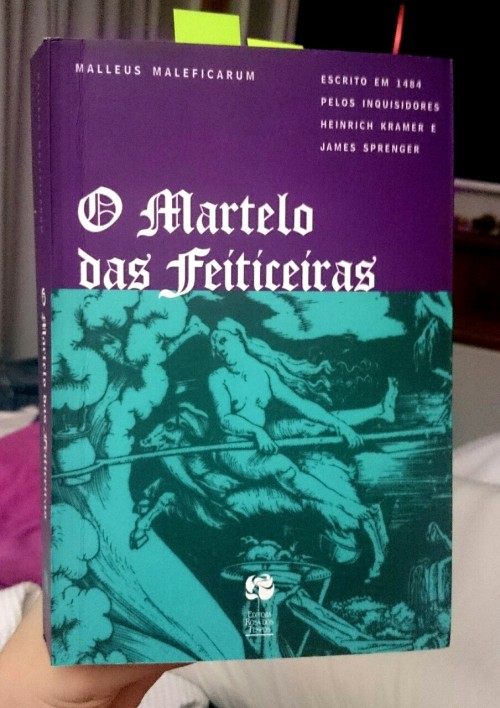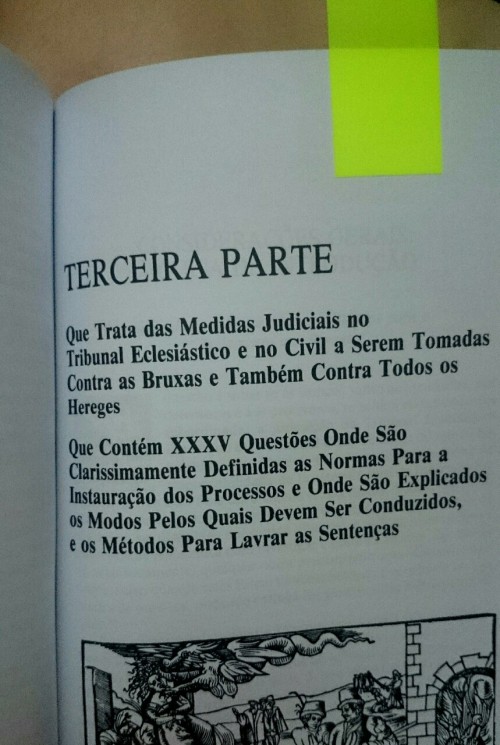






African lioness named Rani, or Queen, sits with her newly born five cubs at the house of her owner who has grown her as a pet, Thursday, March 26, 2015, in Multan, Pakistan. The African lioness has given birth to five healthy cubs. Lions normally have litters of two or three cubs. (Photo by Asim Tanveer/AP Photo)

A newborn giraffe baby stands next to its mother Sandra in the Savannah House of the Budapest Zoo in Budapest, Hungary, Wednesday, March 25, 2015. The s*x of the calf could not have been determined yet. (Photo by Attila Kovacs/AP Photo/MTI)

Jalada Prasad, about six-month-old male Indian one-horned rhino runs around his enclosure on his debut to the public at Alipore Zoological Garden in Kolkata, India, Friday, March 27, 2015. The forest guards rescued Prasad when poachers at Jaldapara forest in north Bengal killed his mother in November 2014. He was brought to the zoo in January 2015 and was kept under strict vigil and nourishment, according to a zoo spokesperson. (Photo by Bikas Das/AP Photo)

Felix, a 9-year-old male polar bear, shakes off water after swimming in a pool for the first time after winter at the Royev Ruchey zoo in a suburb of Russia’s Siberian city of Krasnoyarsk March 22, 2015. Felix was delivered to the zoo as a weak, orphaned cub from a scientific polar station on the Wrangel Island in the Arctic Ocean in May 2006, according to zoo representatives. (Photo by Ilya Naymushin/Reuters)

Felix, a 9-year-old male polar bear, swims in a pool for the first time after winter at the Royev Ruchey zoo in a suburb of Russia’s Siberian city of Krasnoyarsk March 22, 2015. (Photo by Ilya Naymushin/Reuters)

Buyan, a 15-year-old male Siberian brown bear, walks in its enclosure as he wakes up after winter hibernation at the Royev Ruchey zoo in a suburb of Russia’s Siberian city of Krasnoyarsk March 22, 2015. (Photo by Ilya Naymushin/Reuters)

Buyan, a 15-year-old male Siberian brown bear, walks in its enclosure as he wakes up after winter hibernation at the Royev Ruchey zoo in a suburb of Russia’s Siberian city of Krasnoyarsk March 22, 2015. (Photo by Ilya Naymushin/Reuters)

A wildlife department official holds a Malayan sun bear for the media at its head office in Kuala Lumpur, March 24, 2015. It was among other animals estimated to be worth $20,000, including juvenile eagles and a slow loris, seized by the wildlife department during an operation against illegal wildlife traders earlier this month. The illegal wildlife trade is estimated to be $8 billion a year worldwide, according to TRAFFIC, a wildlife trade monitoring network. (Photo by Olivia Harris/Reuters)

A slow loris is carried in a cage by a wildlife department official at the head office in Kuala Lumpur March 24, 2015. (Photo by Olivia Harris/Reuters)

An elephant family plays at the safari park in Guangzhou, Guangdong province, March 24, 2015. (Photo by Alex Lee/Reuters)

Lolita the Killer Whale is fed a fish by a trainer during a show at the Miami Seaquarium in Miami in this file photo from January 21, 2015. Animal activists seeking to free Lolita, a killer whale living in captivity for more than four decades, asked a federal appeals court in Florida March 24, 2015 to reconsider whether U.S. officials “rubber stamped” an aquarium’s license to keep her. (Photo by Andrew Innerarity/Reuters)

Paris zoo veterinarian Bastien Servieres works with a sea lion to acclimate it to his presence during a training session at the Paris Zoological Park in the Bois de Vincennes in the east of Paris March 26, 2015. A “behind-the-scenes” visit, with medical training and feeding of the animals, will be part of special presentations to the public as part of a month of celebration to commemorate the first anniversary of the re-opening of the park in April. (Photo by Philippe Wojazer/Reuters)

Paris zoo veterinarian Bastien Servieres works with a sea lion to acclimate it to his presence during a training session at the Paris Zoological Park in the Bois de Vincennes in the east of Paris March 26, 2015. (Photo by Philippe Wojazer/Reuters)

A zoo veterinarian feeds giraffes at the Paris Zoological Park in the Bois de Vincennes in the east of Paris March 26, 2015. (Photo by Philippe Wojazer/Reuters)

Paris zoo veterinarian Bastien Servieres works with a sea lion to acclimate it to his presence during a training session at the Paris Zoological Park in the Bois de Vincennes in the east of Paris March 26, 2015. (Photo by Philippe Wojazer/Reuters)

Paris zoo veterinarian Bastien Servieres works with a sea lion to acclimate it to his presence during a training session at the Paris Zoological Park in the Bois de Vincennes in the east of Paris March 26, 2015. (Photo by Philippe Wojazer/Reuters)

A rescue worker measures a recovered finless porpoise before releasing it back to the wild, in Poyang Lake, Jiangxi province, March 26, 2015. Oceanography and fishery experts said the finless porpoise has been endangered due to pollution and water shortage, local media reported. (Photo by Reuters/Stringer)

Brown bear Oska (R) and Roni (L) play in a bear sanctuary near the village of Mramor, Kosovo, 18 March 2015. The Bear Sanctuary Pristina has currently 16 brown bears in custody rescued from the private restaurants around Kosovo. All privately kept brown bears lived in small cages at restaurants. They were born mostly in the forests of Kosovo or Albania and snatched from their mothers by animal dealers. (Photo by Valdrin Xhemaj/EPA)

Beluga whales training at an open aviary, at the marine mammal scientific research base of the Primorye Oceanarium of the Far Eastern Division of the Russian Academy of Sciences (RAS) in Vladivostok, Russia on February 17, 2015. (Photo by Yuri Smityuk/TASS/ZUMA Wire)

Ring Tailed Lemurs explore the new “In With The Lemurs” walk-through enclosure at The ZSL London Zoo, London, England, UK on Thursday 26th March, 2015. (Photo by Justin Ng/Retna Pictures/UPPA/ZUMA Wire)

Storks are seen in Biebesheim, central Germany on March 9, 2015 as the sun shines. (Photo by Boris Roessler/AFP Photo/DPA)

Recovering sea lion pups are fed herring in an enclosure at the Marine Mammal Center on March 18, 2015 in Sausalito, California. For the third winter in a row, hundreds of sick and starving California sea lions are washing up on California shores, with over 1,800 found and treated at rehabilitation centers throughout the state since the beginning of the year. The Marine Mammal Center is currently caring for 224 of the emaciated pups. (Photo by Justin Sullivan/Getty Images)

A vet from Chester Zoo catches one of the three as yet unnamed 12 week old Sumartran Tiger Cubs born earlier this year, to identify what sex they are and to vaccinate them, Friday March 27, 2015. The cubs, born in January to mum Kirana and dad Fabi, were found to be two males and one female. (Photo by Peter Byrne/AP Photo/PA Wire)

A vet from Chester Zoo catches one of the three as yet unnamed 12 week old Sumartran Tiger Cubs born earlier this year, to identify what sex they are and to vaccinate them, Friday March 27, 2015. (Photo by Peter Byrne/AP Photo/PA Wire)

A keeper holds a 12 week old Sumatran tiger cub during a routine health check in its enclosure at Chester Zoo in Chester northern England March 27, 2015. The cub, one of 3 born at the zoo, was sexed, vaccinated and micro-chipped. (Photo by Phil Noble/Reuters)

A fox squirrel munches on a discarded glazed donut Wednesday, March 25, 2015, at Mill Race Park in Columbus, Ind. (Photo by Andrew Laker/AP Photo/The Republic)

Bateleur “Attila” sits in its enclosure in the bird park Marlow, eastern Germany, on March 21, 2015. The Global population of this animal is estimated at 10,000 to 100,000 individuals. (Photo by Bernd Wustneck/AFP Photo/DPA)

A yet unnamed polar bear cub is out and about with its mother “Vilma” for the first time in their enclosure at the zoo in Rostock, Germany, 25 March 2015. The 3.5 months old polar bear cub weights just about 20 kg and is to be baptized on 31 March 2015. (Photo by Bernd Wuestneck/EPA)

A picture made available on 25 March 2015 shows a cat yawning on a kitchen table at an apartment in Hamburg, Germany, 24 March 2015. Spring fever occurs mostly in spring time as the days get warmer. (Photo by Axel Heimken/EPA)

Lion cubs cuddle in the Gyongyos Zoo in Gyongyos, Hungary, 21 March 2015. The one male and two female cubs were born on 12 March 2015. (Photo by Peter Komka/EPA)

In this March 24, 2015, photo, California sea lions and harbor seals rest on the docks of the East End Mooring Basin in Astoria, Ore. During a Feb. 11 aerial survey, the Washington Department of Fish and Wildlife counted more than 1,200 California sea lions at the East End Mooring Basin, along with nearly 600 Steller and California sea lions on the South Jetty. On Friday March 20, spokeswoman Jessica Sall of the Oregon Department of Fish and Wildlife said, her agency counted 2,340 California sea lions at the East End Mooring Basin. (Photo by Joshua Bessex/AP Photo/Daily Astorian)

The fluffy yellow chick and its pug pal can be seen cuddling up to one another, snoozing next to each other and posing for the camera on March 23, 2015. The cute chick can even be seen planting a peck on the pups cheek. The pug named Fugly and chick called KFC, were introduced by their owners who live next door to one another in the Philippines. Fuglys owner Tim Ho, who captured these adorable images, explained how he and his neighbour both bought the animals as pets around the same time and introduced them to each other to see how theyd react.To their surprise KFC and Fugly almost immediately bonded. He said the fact that the pug, now 15 months old, wasnt yet territorial over his new home helped make it easier for them to develop their blossoming friendship. (Photo by Tim Ho/Caters News)

An adorable clouded leopard cub has become an Internet sensation for being so sensationally cute. The 2-week old kitten, who squeaks at meal times, is yet to be named and is currently being cared for 24/7 by staff at the Tampa Lowry Park Zoo in Florida. “He is very vocal, particularly near feeding time which occurs approximately every four hours”, the zoo’s rep said in a statement. The rare and fluffy cub’s father is called Yim and his mother is named Malee. The cub was born on March 7, 2015 and opened his eyes for the first time on on March 18. He is now beginning to learn to scoot along by himself. (Photo by TLPZ/Splash News and Pictures)

Going toe-to-toe, these fighting primates could give Floyd Mayweather a run for his money. The amazing images – captured by Australian tourist Julie Rathbone on the banks of the Zambezi river in Africa – show the pair engaging in a few fisticuffs. The Chacma baboons appeared to settle a disagreement by fighting – before a senior baboon plays referee and steps in to break it up. Nurse unit manager Julie Rathbone, 59, from New South Wales, was on a cruise down the river when she spotted the fracas unfolding. (Photo by Julie Rathbone/Caters News)

Two wood bison bulls weighing upward of 2,000 pounds move toward higher ground at the Alaska Wildlife Conservation Center on Sunday, March 22, 2015, in Portage, Alaska. The Alaska Department of Fish and Game on Sunday moved the first wood bison to a staging area in Shageluk, Alaska, for reintroduction in a few week to their native Alaska grazing grounds. Wood bison, which are larger than plains bison native found in Lower 48 states, disappeared from U.S. soil more than a century ago. (Photo by Dan Joling/AP Photo)
With the announcement of our 100th Flickr Commons institution yesterday, we wanted to take a closer look at some of the stories behind iconic photos from the collection. This selection represents a few of our favorite stories, but we highly encourage you to explore the Commons further on your own.

The U.S. National Archives, Richard M. Nixon and Elvis Presley at the White House, December 1970. Elvis Presley was famously obsessed with police badges, owning a huge collection of them. A notable hole in his collection was a badge from the then Federal Bureau of Narcotics and Dangerous Drugs (a predecessor of the DEA); he reportedly believed that “..with the federal narcotics badge, he could legally enter any country both wearing guns and carrying any drugs he wished.” On an overnight flight in an impromptu visit to Washington D.C., Elvis wrote a note to President Nixon requesting a meeting so he could get a “narc badge.” The visit was arranged the same day. A remarkable description of the meeting can be found here.
George Eastman House, Migrant Mother, Nipomo, California, 1936. This stunning portrait of the human face of the Great Depression in 1930’s America is popularly known as Migrant Mother. Commissioned by the Resettlement Administration to document migrant farm workers in California, Dorothea Lange (a remarkable photojournalist and major early influence in documentary photography) came across the destitute Florence Owens Thompson and her family, and shot a series of portraits. This image, and Lange herself, became a subject of controversy when Florence Thompson was rediscovered in 1978. About the picture, she said “I wish [Lange] hadn’t taken my picture. I can’t get a penny out of it. She didn’t ask my name. She said she wouldn’t sell the pictures. She said she’d send me a copy. She never did.” (source).
The Library of Congress, Operating a hand drill at Vultee-Nashville, woman is working on a “Vengeance” dive bomber, Tennessee (LOC), 1944. Rosie the Riveter became an iconic cultural idea in World War II in the United States. As significant chunks of the labor force were outside of the country, all parts of the population – notably women and people of all races – became involved in traditionally male-dominated fields, including aircraft and munitions factories. Sadly the name of the subject in this photograph is unknown.
Royal Australian Historical Society, 03 – Sydney Harbour Bridge Construction, 1930. Although the start of construction predated the depression era of the late 1920s and 30s, the construction of the Sydney Harbour Bridge was completed in the middle of the depression and was a major source of local employment. This image shows a point in construction close to where the two sides of the arch were to meet; two gigantic creeper cranes can be seen on either side. These cranes were used to lower steelwork to points below, including the deck of the bridge. An iconic structure in its own right, the Sydney Harbour Bridge was a feat of engineering at the time.
NASA on The Commons, Cresent Earth rises above lunar horizon, December 1972. This remarkable image of Earthrise was taken by astronaut Ronald E. Evans in the command module of Apollo 17 orbiting the moon while his colleagues were descending to the surface in the lander module.
New York Public Library, Head of the Statue of Liberty on display in a park in Paris, 1883. The Statue of Liberty was not a gift from France to America – it was the brainchild of sculptor Frédéric-Auguste Bartholdi. He made several trips to the United States from France to pitch his idea of “Liberty Enlightening the World” to leaders of several cities. In 1872, he partnered with Edouard de Laboulaye to create the Franco-American Union, which raised funds to build the statue. In 1878 the statue’s head was on display for the Paris Exposition (the image above), and in 1884 the completed statue was on display in a courtyard next to Bartholdi’s studio – with a massive funding shortfall to get it to the United States. Joseph Pulitzer, owner of the daily tabloid New York World launched a campaign to raise funds to finish the project. Hundreds of thousands of dollars from private citizenry was raised as well as a significant donation from a laxative maker that advertised on the pedestal of the statue for a year. In 1886, ten years late, the statue was finally erected on Bedloe’s Island in New York Harbor.
National Archives of Norway, Sex Pistols i Norge, 1977, 1977. Johnny Rotten of the Sex Pistols performing at the Student Union in Trondheim, Norway, 1977.
The U.S. National Archives, “The Tetons – Snake River,” Grand Teton National Park, Wyoming., 1941. In 1941, legendary landscape photographer Ansel Adams was commissioned by the Department of the Interior to take photographs of National Parks and reservations. This striking example of Adams’ mastery of landscape photography became one of the few images stored on a Voyager Golden Record: phonograph records containing records of life and culture on Earth and placed aboard Voyager 1 and 2.
Public Records Office Of Northern Ireland, Titanic, 1912. Built in Belfast, the RMS Titanic was the largest ship of its era. This is an image of the Titanic leaving for a day-long sea trial, where it was declared seaworthy. 12 days later and 5 days into its maiden voyage, the Titanic struck an iceberg and sank.
Produção: Guy Dreifuss (Afficoman), Adi Ezer e Shmulik Bar-Dan
Direção: Alon Segal - http://Alonsegal.com/
Produção Musical: Amit Sagie
Edição: Guy Dreifuss
Igor SantosO NOME DA MÁQUINA É HAPPY COW!
ISSO É DE PROPÓSITO!
Discover the cosmos! Each day a different image or photograph of our fascinating universe is featured, along with a brief explanation written by a professional astronomer.
A Double Eclipse of the SunExplanation: Can the Sun be eclipsed twice at the same time? Last Friday was noteworthy because part of the Earth was treated to a rare total eclipse of the Sun. But also on Friday, from a part of the Earth that only saw part of the Sun eclipsed, a second object appeared simultaneously in front of the Sun: the Earth-orbiting International Space Station. Although space station eclipses are very quick -- in this case only 0.6 seconds, they are not so rare. Capturing this composite image took a lot of planning and a little luck, as the photographer had to dodge a series of third objects that kept, annoyingly, also lining up in front of the Sun: clouds. The above superposed time-lapse sequence was taken from Fregenal de la Sierra in southern Spain. The dark disk of the Moon dominates the lower right, while the Sun's textured surface shows several filaments and, over an edge, a prominence.
Gallery: Solar Eclipse
Authors & editors:
Robert Nemiroff
(MTU) &
Jerry Bonnell (UMCP)
NASA Official: Phillip Newman
Specific rights apply.
NASA Web
Privacy Policy and Important Notices
A service of:
ASD at
NASA /
GSFC
& Michigan Tech. U.
Igor SantosMesmer realmente influenciou o mundo, né?
In 1949, George Orwell received a curious letter from his former high school French teacher.
Orwell had just published his groundbreaking book Nineteen Eighty-Four, which received glowing reviews from just about every corner of the English-speaking world. His French teacher, as it happens, was none other than Aldous Huxley who taught at Eton for a spell before writing Brave New World (1931), the other great 20th century dystopian novel.
Huxley starts off the letter praising the book, describing it as “profoundly important.” He continues, “The philosophy of the ruling minority in Nineteen Eighty-Four is a sadism which has been carried to its logical conclusion by going beyond sex and denying it.”
Then Huxley switches gears and criticizes the book, writing, “Whether in actual fact the policy of the boot-on-the-face can go on indefinitely seems doubtful. My own belief is that the ruling oligarchy will find less arduous and wasteful ways of governing and of satisfying its lust for power, and these ways will resemble those which I described in Brave New World.” (Listen to him read a dramatized version of the book here.)
Basically while praising Nineteen Eighty-Four, Huxley argues that his version of the future was more likely to come to pass.
In Huxley’s seemingly dystopic World State, the elite amuse the masses into submission with a mind-numbing drug called Soma and an endless buffet of casual sex. Orwell’s Oceania, on the other hand, keeps the masses in check with fear thanks to an endless war and a hyper-competent surveillance state. At first blush, they might seem like they are diametrically opposed but, in fact, an Orwellian world and a Huxleyan one are simply two different modes of oppression.
Obviously we are nowhere near either dystopic vision but the power of both books is that they tap into our fears of the state. While Huxley might make you look askance at The Bachelor or Facebook, Orwell makes you recoil in horror at the government throwing around phrases like “enhanced interrogation” and “surgical drone strikes.”
You can read Huxley’s full letter below.
Wrightwood. Cal.
21 October, 1949
Dear Mr. Orwell,
It was very kind of you to tell your publishers to send me a copy of your book. It arrived as I was in the midst of a piece of work that required much reading and consulting of references; and since poor sight makes it necessary for me to ration my reading, I had to wait a long time before being able to embark on Nineteen Eighty-Four.
Agreeing with all that the critics have written of it, I need not tell you, yet once more, how fine and how profoundly important the book is. May I speak instead of the thing with which the book deals — the ultimate revolution? The first hints of a philosophy of the ultimate revolution — the revolution which lies beyond politics and economics, and which aims at total subversion of the individual’s psychology and physiology — are to be found in the Marquis de Sade, who regarded himself as the continuator, the consummator, of Robespierre and Babeuf. The philosophy of the ruling minority in Nineteen Eighty-Four is a sadism which has been carried to its logical conclusion by going beyond sex and denying it. Whether in actual fact the policy of the boot-on-the-face can go on indefinitely seems doubtful. My own belief is that the ruling oligarchy will find less arduous and wasteful ways of governing and of satisfying its lust for power, and these ways will resemble those which I described in Brave New World. I have had occasion recently to look into the history of animal magnetism and hypnotism, and have been greatly struck by the way in which, for a hundred and fifty years, the world has refused to take serious cognizance of the discoveries of Mesmer, Braid, Esdaile, and the rest.
Partly because of the prevailing materialism and partly because of prevailing respectability, nineteenth-century philosophers and men of science were not willing to investigate the odder facts of psychology for practical men, such as politicians, soldiers and policemen, to apply in the field of government. Thanks to the voluntary ignorance of our fathers, the advent of the ultimate revolution was delayed for five or six generations. Another lucky accident was Freud’s inability to hypnotize successfully and his consequent disparagement of hypnotism. This delayed the general application of hypnotism to psychiatry for at least forty years. But now psycho-analysis is being combined with hypnosis; and hypnosis has been made easy and indefinitely extensible through the use of barbiturates, which induce a hypnoid and suggestible state in even the most recalcitrant subjects.
Within the next generation I believe that the world’s rulers will discover that infant conditioning and narco-hypnosis are more efficient, as instruments of government, than clubs and prisons, and that the lust for power can be just as completely satisfied by suggesting people into loving their servitude as by flogging and kicking them into obedience. In other words, I feel that the nightmare of Nineteen Eighty-Four is destined to modulate into the nightmare of a world having more resemblance to that which I imagined in Brave New World. The change will be brought about as a result of a felt need for increased efficiency. Meanwhile, of course, there may be a large scale biological and atomic war — in which case we shall have nightmares of other and scarcely imaginable kinds.
Thank you once again for the book.
Yours sincerely,
Aldous Huxley
Related Content:
George Orwell Explains in a Revealing 1944 Letter Why He’d Write 1984
George Orwell’s 1984: Free eBook, Audio Book & Study Resources
Hear Aldous Huxley’s Brave New World and 84 Classic Radio Dramas from CBS Radio Workshop (1956-57)
Aldous Huxley’s Most Beautiful, LSD-Assisted Death: A Letter from His Widow
Jonathan Crow is a Los Angeles-based writer and filmmaker whose work has appeared in Yahoo!, The Hollywood Reporter, and other publications. You can follow him at @jonccrow. And check out his blog Veeptopus, featuring lots of pictures of badgers and even more pictures of vice presidents with octopuses on their heads. The Veeptopus store is here.
Igor Santos“It was the most difficult thing"
Probably ever.



Fifty years ago today, cosmonaut Alexei Leonov made history when he stepped outside the Voshkod 2 spacecraft and became the first person ever to walk in space. As a small step, as a great leap, Leonov’s 12-minute spacewalk was an adventure for the ages — and it almost killed him.
The BBC has the story of how his spacesuit started inflating into a death trap:
At this point the cosmonaut realised something was wrong. The lack of atmospheric pressure in space had slowly caused his spacesuit to inflate like a balloon. He recalls:"My suit was becoming deformed, my hands had slipped out of the gloves, my feet came out of the boots. The suit felt loose around my body. I had to do something.”"I couldn’t pull myself back using the cord. And what’s more with this misshapen suit it would be impossible to fit through the airlock."In five minutes he would be in the Earth’s shadow, and plunged into total darkness. Without telling ground control, the cosmonaut decided to bleed half of the air out of his spacesuit through a valve in its lining. This risked starving his body of oxygen, but if he couldn’t get back inside the capsule, he’d be dead anyway.
Leonov let out a little oxygen at a time to reduce the pressure. But as he did so, he started to feel the first hints of decompression sickness.
“I began to get pins and needles in my legs and hands. I was entering the danger zone, I knew this could be fatal.”He started coiling the cord in order to haul himself back. When he finally reached the airlock, he pushed the camera in, grabbed the sides and lurched through head first.The extreme physical exertion had caused his temperature to soar; he was now at risk of heatstroke and sweating uncontrollably. The globules filled his helmet, obscuring his vision.Leonov was supposed to re-enter the airlock feet first. Getting in the wrong way meant he had to turn himself around in the cramped space to make sure the umbilical cord was inside and the hatch was locked.He says: “It was the most difficult thing: I’m in this suit and I had to turn around in the airlock. But with the perspiration, I couldn’t see anything.”"I don’t normally sweat much, but on that day I lost 6kg in weight.”After curling around in his bulky suit, in such a narrow space, Leonov finally made it back inside the craft.(BBC)
Jesus Christ that’s most of my phobia list right there.

|
|

‘Senhor Servo & Outras Histórias’ de Leon Tolstoi foi traduzido diretamente do russo para o português pela escritora Tatiana Belinky, nascida da Rússia em 1919 e falecida em São Paulo em 2013.
A primeira adaptação do Sítio do Picapau Amarelo para a TV foi feita por Tatiana e seu marido, Júlio Gouveia. É bem provável todos nós tenhamos lido algum poema ou até algum livro dela durante a infância pois a verdadeira Rainha dos Baixinhos escreveu mais de duzentos livros destinados ao público infanto-juvenil.
Dá gosto pegar traduções assim porque muitas obras em russo ou alemão publicadas no Brasil acabam sendo tradução de uma outra tradução (ou às vezes tradução de tradução de tradução), o que pode gerar uma perda bem significativa não só do estilo do autor como de nuances importantes do seu conteúdo.
Tolstoi morreu em 1910, aos 82 anos, pouco tempo depois de ter decidido de separar da esposa para viver em comunhão com um grupo anarco-pacifista-cristão. Sorte a nossa que ele escreveu 'Guerra e Paz’ e 'Ana Karenina’ antes de ser tomado por crenças meio esquisitas e passar a defender coisas como a dissolução da propriedade privada e a castidade, pois em algum momento ele rejeitou as suas próprias obras e nem os direitos autorais queria mais receber.
'Senhor e Servo’ é muito mais do que uma história sobre a relação de um patrão com um empregado, é um conto sobre a inclemência da natureza temperado pela beleza psicológica de Nikita, o servo. Delicioso de ler. É daqueles contos que transportam o leitor ao ambiente criado pelo escritor e lhe geram sensações praticamente físicas.
Leia com o ar condicionado desligado.
Beijos,
Meire
FIlme caseiro datado de 1908, realizado durante a celebração dos 80 anos de Tolstoi.
Igor Santos..a smooth criminal. pam pamram param rampam pamram rampam param ram pam pam








Évolution inversée
“It took me four years to paint like Raphael, but a lifetime to paint like a child.”
― Pablo Picasso
Igor SantosGostei do Coelho do Mal Versus Cobra Cianótica.

Obariyon. 2013. Stoneware, antique hooks, glaze. 17 x 46 x 30″
Washington-based artist Beth Cavener Stichter sculpts human-sized animals from clay and other materials in both dramatically overt and subtly ambigous displays of emotion. Hung from ropes or pinned to walls, the anthropomorphic sculptures are infused with juxtapositions that depict the extremes of both human emotion and animalistic behavior: predator and prey, love and hate, fear and peace. “On the surface,” shares Stichter, “these figures are simply feral animals suspended in a moment of tension. Beneath the surface, they embody the consequences of human fear, apathy, aggression, and misunderstanding.”
Stichter collaborates with a variety of artists in her work, including Alessandro Gallo, who designed and painted the ornate Japanese tattoos on the nineteen-foot long anaconda snake depicted in Tangled Up in You seen below. There’s much more to see over on her website and several studio views on Hi-Fructose. All images courtesy the artist.

Obariyon, detail.

Obariyon, detail.

Tangled Up in You. 2014. Stoneware, mixed media. Tattoos designed and painted by Alessandro Gallo.

Tangled Up in You, detail.

Tangled Up in You, detail.

Tangled Up in You, detail.

The Sentimental Question. 2012. Stoneware.

L’Amante. 2012. Stoneware, painted tattoos. 45 x 60 x 44″

L’Amante, detail.

The Question That Devours. 2012. Stoneware.
Igor SantosO símbolo em todo interruptor de campainha é um sino.









Igor SantosEsse livro só me deu raiva. Especialmente porque parece que foi escrito ontem.


Malleus Maleficarum - O Martelo das Feiticeiras, por Padre Heinrich Kramer
O Padre Heinrich Kramer foi o escritor mais intelectualmente desonesto que já consultei em toda minha vida, e olhe que estou incluindo dos acadêmicos que distorcem a Teoria da Evolução aos pseudocientistas de plantão e certos militantes de sofá dos tempos áureos do Orkut. Eu não achava que seria possível encontrar tanta desonestidade junta em uma obra só.
Essa afirmação saindo de uma pessoa moderada como eu deve ser bastante significativa para quem me conhece.Não achei nenhuma redenção para o Padre Heinrich. Nem ignorância ou inocência podem ser apontadas como atenuantes, pois ele mesmo colocou argumentos bons e alguns até bem honestos contra o que defendia para depois refutá-los com um corolário interminável de falácias.
Quase infartei quando ele usou a semiologia de Avicena para defender a existência de bruxaria, sugerindo que era dessa sandice que o estudioso falava quando ensinava seus alunos a observarem o facies e o aspecto do olhar dos doentes para diagnosticá-los. Sério, deu dor torácica. Ele é tão desonesto que foi atrás de várias pessoas que gozavam de credibilidade para validar suas distorções.
O livro inteiro pode ser utilizado como fonte de estudo de falhas de discurso. Apenas por este motivo posso considerá-lo uma preciosidade. Quem quiser estudar e treinar lógica pode até fazer um blog só com esse livro que tem material para bastante tempo. Da Falácia do Espantalho ao Declive Escorregadio, passando pela Falácia do Escocês ao apelo para emoção, medo e autoridade, há de tudo. Tudo mesmo. O Padre não deixou escapar nada, exercitou a desonestidade ao extremo.
Para feministas o livro é um prato que transborda e não para de derramar.
Interessante e até apaziguador para mim foi saber que na Idade Média haviam muitas pessoas que não acreditavam na existência de bruxas e tentavam persuadir grupos contra a ideia e outras que, embora acreditassem, não defendiam que bruxas tivessem tanto poder ao ponto de criar tempestades, dizimar rebanhos ou fazer pênis desaparecerem.
Eu não sabia que o controverso era significativo e daí via como generalizada a crença das pessoas em coisas como mau olhado atribuindo esse tipo de fé a uma ignorância pura e simples, até certo ponto justificada pela privação pedagógica e pela falta de conhecimento científico.
Mas não. Havia muita coisa produzida e de conhecimento público defendendo que o fato de um evento não ter causa conhecida não autorizava a Igreja a atribui-la ao Demônio, textos comparando crenças religiosas a superstições e outros ligando-as a um sincretismo entre diversas mitologias e o cristianismo. Sensacional. Muita gente hoje tem um nível de raciocínio lógico bem inferior a algumas pessoas da Idade Média.
Há muitos textos interessantes em língua inglesa sobre o Malleus, de como ele foi utilizado, da real importância que teve na época, sobre a proibição que não conteve suas reedições ou utilização… Quem se interessar pode dar uma procurada, mas eu gostaria de mostrar algumas coisas sobre ele.
No British Museum (que já tive o prazer de visitar pelo menos quatro vezes) tem seis edições do Malleus sem indicação de uma data correta e lugar de publicação, então elas foram datadas considerando que uma edição tende a corrigir os erros, sejam ortográficos ou outros, da anterior.
Hoje se defende (não sem controvérsias) que o Padre Sprenger foi acrescentado como coautor do livro por desonestidade de Kramer, que queria dar mais autoridade à obra. O autor se utilizou de uma Bula Papal que foi escrita ANTES do livro como se tratasse um aval para o mesmo e parece ter forjado um Certificado de Aprovação do Malleus por uma Faculdade de Teologia.
Essas três ações garantiram sucesso de vendas até a Igreja tentar barrar a publicação, mas aí já era tarde demais. Ele e os assassinos que já seguiam crença similar condenaram à humilhação, tortura e morte um número expressivo de pessoas. No que se refere à bruxaria, condenaram principalmente mulheres pobres, muitas das quais parteiras e outras vítimas de inveja, ciúmes, conflitos entre vizinhos ou simplesmente de maridos que queriam se livrar delas.
Uma das coisas que a Inquisição defendia é que enquanto a mulher não confessasse a tortura deveria continuar e que alegar inocência só falava mais contra a acusada.
A orientação é que a mulher fosse torturada nua, com pelos raspados, e que se ela gozasse de pouca reputação no condado ou fosse pobre, que não recebesse qualquer informação sobre a pessoa que a acusou.
Se fosse rica poderia ter mais direitos, embora as pessoas ricas raramente fossem a julgamento por Bruxaria pois os letrados, segundo a Igreja, gozavam no geral de imunidade contra o Diabo pois tinham a mente mais forte. Algumas Igrejas Evangélicas continuam com essa noção torta de susceptibilidade, tanto que nunca se vê um rico possuído pelo Demônio sendo chacoalhado por um Pastor e exposto ao vexame público, só os pobres são vítimas do Satanás?
O famoso Padre defendia também que o julgamento fosse sumário, que a pessoa não tivesse acesso sequer conteúdo do depoimento dos acusadores e que, preferencialmente não fosse defendida por um advogado, salvo em situações especiais. Naquela época a Justiça já era baseada no contraditório e defesa (não tão ampla, mas tinha), ou seja, não havia justicativa para que o Inquisitor defendesse isso. E ele defendia que se a pessoa teve acesso a um advogado e conseguiu um Recurso, certamente o fez com ajuda do Diabo, então merece morrer. Óbvio, né?
Vocês sabem o que significa Herege? Segundo Padre Agostinho, herege é ‘aquele que dá origem a novas opiniões e as segue’. Na Idade Média os teólogos defendiam que a Igreja só pode considerar herege aquele que é cristão mas modifica suas crenças ou não aceita seus dogmas, passando a ter novas concepções.
Mas foi justamente a Heresia que fez muitas pessoas não cristãs serem assassinadas, entre eles judeus e muçulmanos, pois embora tivessem outra religião e não devessem obrigação nenhuma à Igreja Católica foram condenados e assassinados pois um dos motivos da Inquisição foi expandir a Igreja e aumentar a sua riqueza.
Ao contrário da possessão demoníaca, foi definido que a heresia não era mais comum em pobres e assim a Igreja arrumou uma forma de confiscar os bens dos ricos. Só quem estava relativamente protegido contra a Inquisição eram os homens cristãos.
Quando um homem cristão traia sua esposa era bem fácil resolver. Bastava dizer que foi enfeitiçado pela amante. Ela passava por todo processo e poderia ou ficar a pão e água o resto da vida ou morrer queimada. Mas com o homem que traia não acontecia nada, bastava ele admitir que agiu de modo contrário às Escrituras que estaria perdoado. Só poderia ser condenado se dissesse que não fez nada errado porque nesse caso seria Heresia.
A primeira parte do livro discorre sobre as condições para que a Bruxaria exista, que são o Diabo, a Bruxa e a permissão de Deus. Essa parte parece uma comédia de mau gosto e não se precisa chegar à terceira página para perceber as falácias clássicas brotando. A disfunção erétil é totalmente culpa da mulher, e por isso ela deve ser torturada. Tudo isso com a permissão de Deus e para a sua Glória. Assim é a Fé verdadeira.
“A que for considerada culpada, mesmo tendo confessado o seu crime, há de ser supliciada, há de sofrer todas as torturas prescritas pela lei (…)”.
Na questão IV desta parte o Padre explica por que a mulher é mais predisposta ao pacto com o Demônio, pois ela tem a natureza perversa e traiçoeira, é fraca, mais carnal e tem menos inteligência. Aí a gargalhada alta vem quando ele fala que todos os Reinos caíram por culpa da uma mulher e tenta usar Helena de Troia como prova para sua premissa.
Como pode tanta desonestidade? Mesmo se a história fosse real, o que na época já se sabia que não era, Helena de fato era a vítima da história. Fruta que me partiu, a mulher foi sequestrada e mesmo assim o infeliz das costas ocas atribui a culpa do conflito a ela!
Na parte dois ele cita a metodologia das Bruxas, onde fica bastante clara a fobia contra mulheres e a fixação sexual do Padre. A mulher é a coisa imunda e o homem é o Santo tentado pela mulher, que é inclusive capaz de obstaculizar sua função reprodutora, tanto através de disfunção erétil quanto de esterilidade.
Esta parte trata também dos Exorcismos. O legal é que o Padre comenta que os amuletos são considerados ilícitos pela Igreja com base nos estudos de Santo Agostinho mas hoje são muito comuns entre católicos, como aquelas medalhinhas com Santos e correntes para o pescoço que contam com medalhas na frente e atrás. Elas eram usadas na Idade Média para espantar o Demônio e hoje são muito populares como souvenir religioso.
Ele explica também como a pessoa faz o pacto com o capiroto e como se processam as relações sexuais e toda luxúria com Íncubos e Súcubos, definindo que o Demônio foi o pioneiro em fecundação artificial e sabe selecionar bem o sêmen, visto que homens nascidos de relações sexuais mediadas por demônios costumam ser grandes e 'avantajados’ (referindo-se ao tamanho do pênis). E a história 'real’ da bruxa que guardava os pênis dos homens em um ninho de passarinho?
A cópula com demônios e a confecção de pomadas feitas a partir de ossos de criancinhas batizadas eram, para os Padres Inquisitores da época, comum a todas as bruxas no entanto ninguém nunca viu a cópula nem viu a confecção das pomadas, já que eram feitas de modo secreto.
Mulher que gosta de sexo? Lascívia diabólica.
“Não menos que quarenta e oito foram queimadas em cinco anos”, disse ele acerca de um povoado onde mulheres com vinte anos de idade ou menos supostamente já não eram virgens. Imaginem o que é para um povoado pequeno, como eram os povoados à época, ver quarenta e oito de suas mulheres e filhas assassinadas? Se 48 foram condenadas a morte imaginem quantas foram condenadas a diversos suplícios e até à prisão perpétua…
No Capítulo XIII as parteiras, criaturas nobres que ajudavam mulheres de seu povoado a parir e que garantiam uma melhor sobrevida à mãe a ao filho do que os médicos da época, foram mortas aos montes. A mortalidade infantil era alta, muitas mães morriam durante o parto ou morriam de febre puerperal, bem como muitos recém-nascidos morriam. Era assim. Más condições de nutrição e higiene ou simplesmente eclâmpsia, outras doenças maternas e doenças congênitas. Mas a culpa era das Parteiras e não adiantava um médico ou outro estudioso tentar defendê-las. E mais, se a criança tivesse alguma deficiência ou até fosse muito sapeca ou desobediente quando crescesse era tida como criança consagrada ao Demônio pela parteira. Imaginem aí as consequências também para as crianças, que eram 'disciplinadas pela vara’ ou submetidas a exorcismos.
A terceira parte do livro trata dos trâmites legais propriamente ditos, discorre sobre a competência dos Julgamentos em casos de Heresia e/ou Bruxaria, colocando que a Bruxaria nem sempre se acompanha de Heresia, afinal só crê no Demônio quem também crê em Deus.
Nessa época a Igreja defendia que o Julgamento deveria ser feito na presença de um Inquisitor (Padre) e um Bispo, mas Kramer defendia que não seria necessário, bastaria uma pessoa para julgar e condenar. Aliás, esse foi um dos motivos pelo qual ele escreveu o livro, pois tinha desejo de provar ser capaz de julgar sem a presença de um Bispo.
Esta parte segue descrevendo como era a rotina da época, como as testemunhas eram ouvidas, de como a Bruxa deve ser presa, de como deve ser condenada e torturada nua, que deve ser interrogada de novo e torturada de novo e de como deve ser enganada para confessar, recebendo promessas falsas. O Padre ensina como dar a entender que a mulher seria exilada quando de fato ficaria a pão e água numa cela escura ou como é lícito um Padre fazer um acordo com ela para manter sua vida mas depois largar o caso, para que outro Padre possa mandar queimá-la. E também ocorria uma espécie de delação premiada mórbida.
Se dentre as testemunhas há um criminoso, o depoimento dele só tem valor se for para condenar a mulher. Se for para defendê-la, ele não pode ser aceito, já que até prova em contrário (quase impossível de se obter) a pessoa pode ser condenada inclusive por rumores do povoado então pouca coisa é suficiente para desqualificar a acusação.
Ele descreve que o Julgamento deve ser sumário, mas a tortura não. Orienta que ninguém se apresse na tortura, que se comece de modo mais brando e que um notário vá registrando o que a acusada falou e como estava sendo torturada na hora, porque depois isso vai ser testado novamente para confirmar a veracidade. Ele também recomenda que se o Padre ou Bispo sentir prazer na hora da tortura procure não demonstrar.
A mulher que se paralisasse diante dos abusos e do medo e não chorasse, era considerada ainda mais culpada, mesmo se caísse no choro quando a sessão de tortura acabasse. Essa capacidade de se manter quase catatônica durante a tortura só poderia mais uma ação do Demônio e era chamada de poder maléfico de preservar o silêncio.
Gente, poder maléfico de preservar o silêncio…
Isso ocorre com muitas mulheres enquanto estão sendo estupradas, é uma forma que nossa mente encontra para fugir de uma violação intensa à nossa integridade. Mas se a mulher chorasse enquanto muitas 'evidências’ apontam para que seja Bruxa, também era considerada mais culpada por ter simulado o choro transferindo sua saliva através da bochecha para os olhos com ajuda do Demônio. Não tinha escapatória.
E por fim a obra traz os modelos de sentença para cada tipo de crime e para cada condenação. Quando uma mulher era considerada inocente eles tinham um cuidado de colocar na sentença que apenas não havia sido provado nada contra ela para que ela pudesse passar por todo processo de novo caso rumores surgissem ou ela fosse acusada pela mesma ou por outra pessoa.
Algumas pessoas condenadas pela Inquisição propunham a realização da Ordália, um tipo de prova mágica usada na Idade Média inspirada na Lei bíblica de Águas da Amargura. Isso mostra que eram pessoas crentes, que tinham esperança que Deus ouvisse seu clamor e concedesse assim a evidência de sua inocência e as livrassem de uma morte terrível. Mas isso nunca acontecia.
Em Números é descrito que uma mulher suspeita de adultério deveria beber água contaminada; se ela sobrevivesse seria considerada inocente e se fosse culpada, morreria. Na Ordália o teste para a prova de inocência ocorria de acordo com a classe social do acusado, poderia ser por imersão de partes do corpo em água fervente ou por queimadura com ferro incandescente. O procedimento foi proibido em 1200 e pouco porque se descobriu que alguns Padres pagavam pessoas para andar em ferro suportamente em brasa visando enganar o povo, para que acreditassem que algumas pessoas não se queimavam por ação de Deus. Na verdade todo mundo se queimava então a Igreja considerou que Deus havia escolhido não se pronunciar nos Julgamentos e assim concedeu total autoridade aos Inquisitores.
Um beijo,
Meire